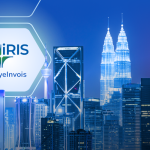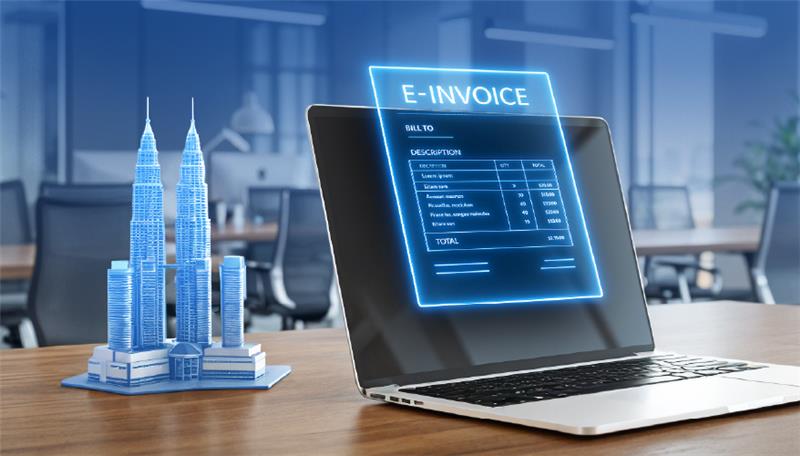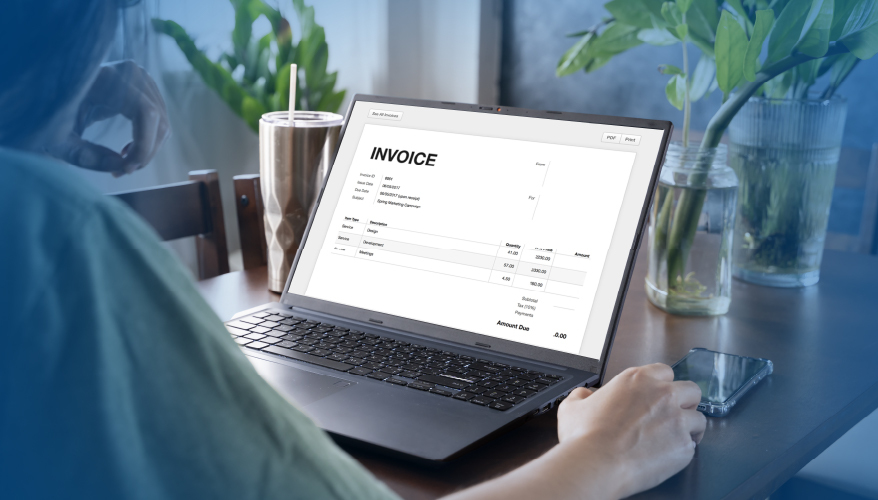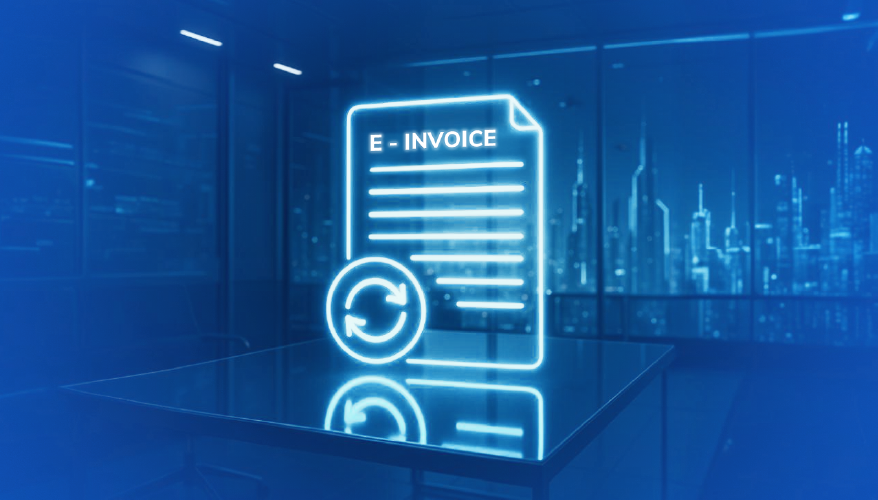
Why is IRIS MyeInvois a better e-Invoicing solution for large businesses in Malaysia
April 11, 2025
E-Invoicing in Malaysia: Everything you Need to Know
August 12, 2025Malaysia’s E-Invoicing Phase 3: What SMEs Need to Know Before July 2025

Malaysia is rapidly moving towards full-scale digital tax transformation with the phased rollout of the E-Invoicing initiative by the Inland Revenue Board (LHDN). As part of this shift, E-Invoicing Phase 3 will become mandatory for businesses with annual revenue between RM5 million and RM25 million starting 1 July 2025.
1. Assess Current Systems and Processes
Start with an internal evaluation. Identify how your current invoicing is handled—whether manually, through spreadsheets, or via an accounting/ERP system. This will determine the complexity of integration and whether manual entry or API connectivity is ideal.
2. Decide on a Submission Method
LHDN supports two primary submission channels:
3. Select a Reliable E-Invoicing Partner
Integration can be complex, especially for businesses new to government-regulated digital systems. That’s why many Malaysian companies are choosing robust solutions like IRIS MyEInvois, a full-featured, LHDN-recognized platform tailored for Malaysia’s e-Invoicing framework.
IRIS MyeInvois simplifies integration by offering:
4. Start Testing Early
Don’t wait for the last moment, begin testing e-Invoice generation and validation flows as early as possible. This reduces the risk of errors post-implementation and allows your team to become comfortable with the system.
5. Educate Internal Teams
Train your finance, tax, and IT teams on the new workflow. Everyone involved in invoice creation, validation, and reporting must understand how the system works, including how to manage rejections and cancellations.
What Is E-Invoicing Phase 3 in Malaysia?
Malaysia’s move toward nationwide e-Invoicing continues with Phase 3 of implementation, officially scheduled for 1 July 2025. This phase targets businesses with annual revenue between RM5 million and RM25 million, marking a critical step for SMEs in digitizing their invoicing processes as mandated by the Inland Revenue Board of Malaysia (LHDN). This initiative is part of Malaysia’s broader digital tax reform strategy aimed at reducing tax evasion, enhancing real-time compliance, and streamlining business processes.Revised E-Invoicing Rollout Timeline
Originally, all businesses with annual revenue between RM500,000 and RM25 million were grouped under Phase 3. However, LHDN has recently revised the schedule:| Annual Revenue | Implementation Date |
| > RM100 million | 1 August 2024 (Phase 1) |
| RM25 million – RM100 million | 1 January 2025 (Phase 2) |
| RM5 million – RM25 million | 1 July 2025 (Phase 3) |
| RM1 million – RM5 million | 1 January 2026 (Revised) |
| RM500K – RM1 million | 1 July 2026 |
| < RM500K | Currently exempt |
Compliance Requirements for E-Invoicing Malaysia Phase 3
For businesses, compliance with Phase 3 of E-Invoicing in Malaysia mandate means more than just sending digital invoices. You must:- Generate e-invoices for all B2B, B2C, and B2G transactions.
- Submit each invoice to LHDN for validation before sharing it with the buyer.
- Include 55 mandatory fields as specified in the LHDN schema (like buyer details, tax info, invoice type).
- Track document status such as cancellations and rejections and issue credit or debit notes accordingly.
- Ensure QR codes are included on validated invoices for real-time verification.
What Businesses Need to Do to Prepare
As the E-Invoicing Phase 3 deadline (1 July 2025) approaches, businesses with annual revenue between RM5 million and RM25 million must proactively gear up for compliance. Here’s a breakdown of what preparation entails:1. Assess Current Systems and Processes
Start with an internal evaluation. Identify how your current invoicing is handled—whether manually, through spreadsheets, or via an accounting/ERP system. This will determine the complexity of integration and whether manual entry or API connectivity is ideal.
2. Decide on a Submission Method
LHDN supports two primary submission channels:
- MyInvois Portal: Best for companies with fewer invoices and limited digital infrastructure.
- API Integration: Recommended for businesses needing automation, faster processing, and real-time validation.
3. Select a Reliable E-Invoicing Partner
Integration can be complex, especially for businesses new to government-regulated digital systems. That’s why many Malaysian companies are choosing robust solutions like IRIS MyEInvois, a full-featured, LHDN-recognized platform tailored for Malaysia’s e-Invoicing framework.
IRIS MyeInvois simplifies integration by offering:
- API-ready connectivity
- A secure cloud platform with real-time validation
- Support for invoice generation, sharing, and archiving
- Dedicated onboarding support and compliance tracking
4. Start Testing Early
Don’t wait for the last moment, begin testing e-Invoice generation and validation flows as early as possible. This reduces the risk of errors post-implementation and allows your team to become comfortable with the system.
5. Educate Internal Teams
Train your finance, tax, and IT teams on the new workflow. Everyone involved in invoice creation, validation, and reporting must understand how the system works, including how to manage rejections and cancellations.
Common Challenges Faced by SMEs
Despite the benefits, Small and Medium Enterprises (SMEs) often encounter specific hurdles when adapting to e-Invoicing:- Limited IT Infrastructure: Many SMEs lack the internal systems or automation needed to generate and submit e-Invoices in the required format.
- Understanding Compliance Rules: Keeping up with LHDN’s technical requirements and validation schema can be complex without expert guidance.
- Resource Constraints: Smaller teams may struggle with implementation while managing day-to-day operations.
- Integration Difficulties: Connecting existing accounting software with LHDN’s MyInvois system, especially via API, can be technically challenging.
- Change Management: Shifting from manual invoicing to a structured electronic process often requires employee training and workflow redesign.
Need a Trusted E-Invoicing Partner for Phase 3?
Preparing for Malaysia E-Invoicing Phase 3 doesn’t have to be overwhelming. IRIS MyEInvois is a secure, LHDN-registered platform designed to help businesses like yours transition smoothly, whether you prefer API-based integration or a user-friendly web interface. From invoice validation to QR code generation and full audit readiness, IRIS MyEInvois is built for end-to-end compliance.Explore the solution at myeinvois.my and get ready ahead of July 2025.




